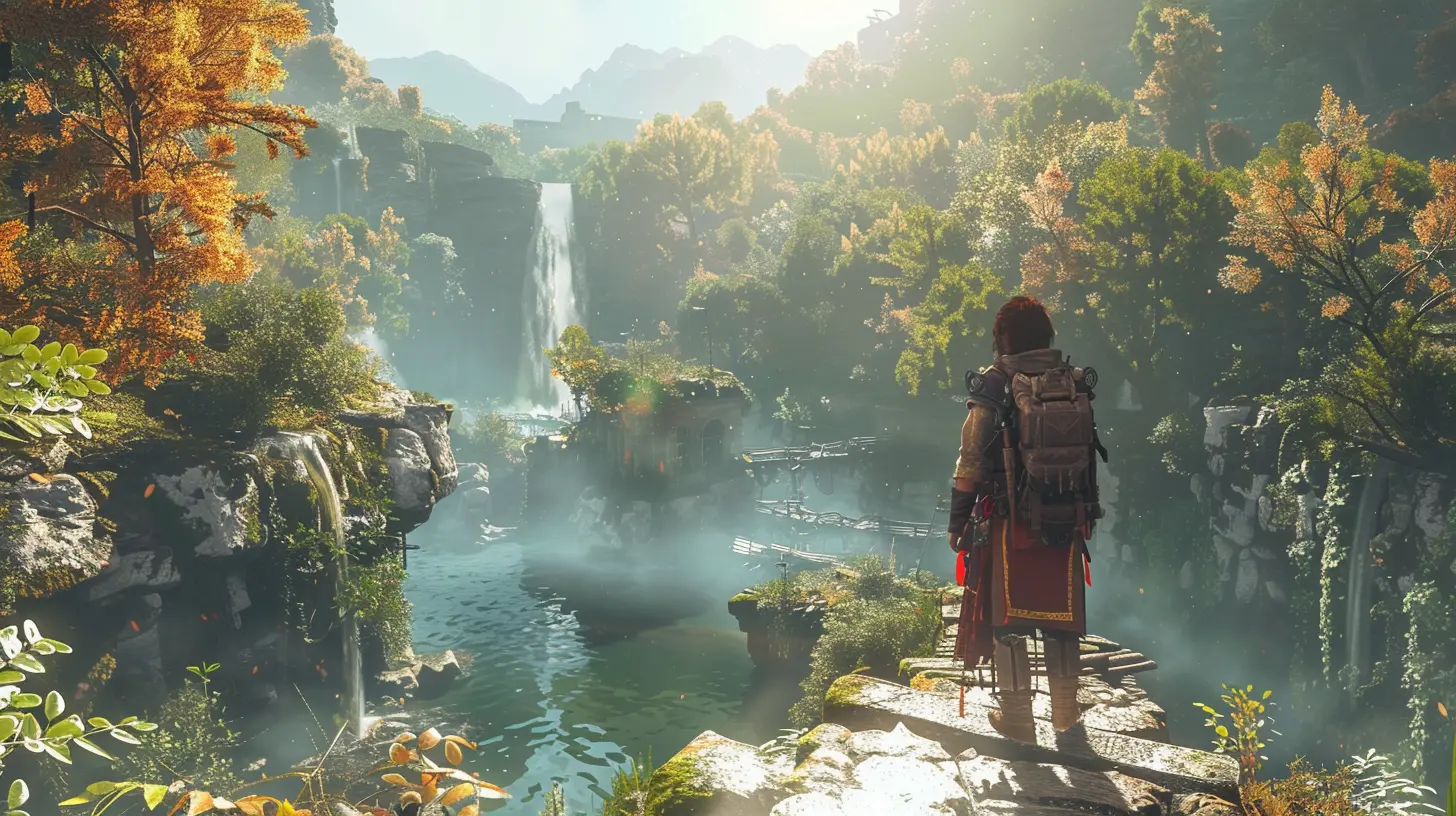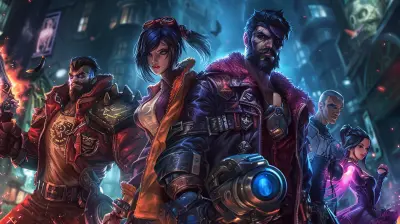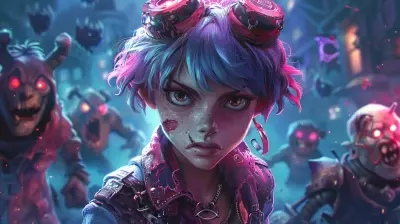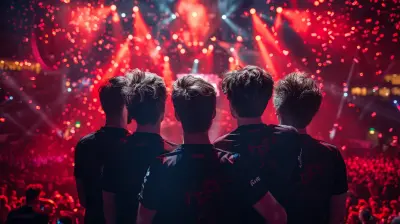The Balance Between Player Feedback and Developer Vision in Beta Testing
18 April 2025
Ever wondered how your favorite games get that polished feel before they hit the shelves (or download queue)? It all boils down to a delicate dance between players and developers during beta testing. Think of it as a relationship—sometimes harmonious, sometimes messy, but always important. Developers want to hold onto their creative vision, and players, well, they want their voices heard. Striking the right balance is both an art and a science, and that's what we’re diving into today.

Why Beta Testing is Like a First Date
Let’s face it—beta testing is like introducing your weird, half-finished brainchild to someone you’re trying to impress. It’s a nerve-wracking experience for developers. They’ve poured their hearts into crafting a game, but no matter how genius they feel their ideas are, the moment the public gets a taste, chaos can erupt.Some players might swoon over the game’s unique mechanics, while others will relentlessly nitpick the color of a character's shoelaces. The beta phase serves as the first real test of “Are we on the same wavelength?” between creators and players. And let’s be real, not every date ends up with sparks flying.

The Tug-of-War: What Players Want vs. What Developers See
At its core, beta testing gives players a voice—but how loud should that voice be? Here’s the thing: players think they know what they want, but sometimes they don’t. Yeah, I said it. Imagine if halfway through baking a cake, someone peeked into the oven and yelled, "No! Make it a pizza instead!" That’s often how feedback feels to developers who have a clear vision but get bombarded by conflicting opinions.Developers, on the other hand, need to stay open-minded without losing sight of their goals. If they cater to every single request, the game could become an unrecognizable Frankenstein. At the same time, ignoring feedback altogether can be a one-way ticket to a flop. So, how do they walk this tightrope?
Knowing When to Say "Thank You" and When to Say "Nah, We're Good"
The best developers master the art of filtering feedback. Not all suggestions are created equal. Some feedback is thoughtful and constructive, pointing out genuine flaws or areas for improvement. Other times, it’s just noise—players complaining because something feels “off” without being able to articulate why.Here’s an example: let's say players during beta say, “The difficulty curve is terrible!” Does that mean the game is genuinely too hard, or could it be that they haven’t fully grasped the mechanics yet? A smart dev team knows how to dig deeper, look at gameplay metrics, and determine what’s really causing the issue. Sometimes they’ll listen, and sometimes they’ll stick to their guns.

The Perils of Over-Adapting to Player Feedback
Okay, let’s talk about when things go too far. We’ve all seen games that buckle under the weight of player demands. Maybe the game becomes too easy because the devs nerfed every challenging mechanic after complaints. Or maybe fan-favorite characters get bizarre redesigns to appeal to a vocal minority. In trying to please everyone, the game ends up pleasing no one.Look, I get it. Players are passionate. But passion doesn’t always equal clarity. Catering to every whim can dilute the very essence of what made the game special in the first place. Developers have to decide which hills they’re willing to die on. It's like adding salt to soup—too much, and you ruin the whole pot.
The Anthem Effect
Let’s not forget about Anthem. Ah, the poster child for what happens when a lack of clear vision meets overwhelming fan expectations. The game promised players the world, but in trying to cater to feedback and hype, the final product felt disjointed and unfinished. It’s a cautionary tale for developers everywhere: stick to your core ideas, or risk crumbling under the weight of trying to do it all.
Why Developer Vision Matters More Than You Think
At the end of the day, a memorable game stands out because of its unique vision. Think of indie hits like Hollow Knight or Undertale. These games didn’t try to mimic what players were already used to. Instead, they leaned hard into the developers' creative quirks, offering something fresh and distinct.When developers focus on their vision, they create a cohesive experience. Sure, they’ll still listen to feedback, but they’ll use it as a tool rather than a roadmap. Their goal isn’t to create a game that everyone "kinda likes." It’s to build something that some people will absolutely love.
Balancing the Scales
Where it gets tricky is ensuring that this vision doesn’t come off as stubbornness. Listening to players is a vital part of the process. After all, a game is meant to be played. Ignoring feedback entirely is like throwing a party and not caring if anyone’s actually enjoying themselves.The best games strike a balance. Developers stand firm on the principles that matter most but remain flexible in areas where feedback can genuinely improve the player experience. It’s like designing a house: you know where you want the rooms to go, but you’re willing to let someone suggest a better shade of paint for the walls.
Techniques Developers Use to Mediate the Feedback-Vision Battle
Game studios have become increasingly clever at walking this fine line. Over time, they’ve developed practical strategies to bridge the gap between what players want and what developers envision. Let’s dive into some of these approaches:1. Player Analytics and Telemetry
You might not realize it, but during a beta test, developers are quietly spying. Okay, not spying spying, but they’re collecting valuable data on how you play the game. They analyze heatmaps, time spent in certain areas, or which skills players gravitate toward.For example: If 90% of players avoid using a particular weapon, that’s a clear sign it needs reworking. It’s one thing to hear feedback like “this weapon sucks,” and another to see the data to back it up.
2. Surveys and Feedback Forms
Developers often include surveys at the end of beta tests. Sure, they may feel like filling out a personality quiz, but this is how devs gauge the overall sentiment. By asking targeted questions, they can sift through the noise and focus on what matters most—like combat balance or progression systems.3. Community Managers as Middlemen
Let’s give a round of applause for community managers. These unsung heroes act as translators between players and developers. They’re the ones who sift through your Reddit rants, pick out the golden nuggets of useful feedback, and present it to the dev team in a way that doesn’t make them want to cry.4. Controlled Test Groups
Rather than throwing open the doors to everyone, some studios use smaller, hand-selected test groups for initial feedback. These groups tend to be made up of hardcore fans, streamers, or long-term supporters who understand the studio’s style. Their feedback usually carries more weight since they already “get” the vision.
The Future of Beta Testing: Can AI Help?
As much as beta testing relies on human interaction, technology might change how we handle player feedback. Imagine AI tools analyzing sentiment in feedback forms or flagging gameplay patterns that devs might miss. While we’re not there yet, the integration of AI could make beta testing more efficient—though there’s no replacing the human touch (for now).Closing the Loop: Why Both Sides Need Each Other
Here’s the truth: developers and players are like two sides of the same coin. Without player feedback, games risk becoming passion projects that only appeal to their creators. Without developer vision, games risk becoming watered-down messes of mismatched ideas. Both sides need to work together to create something phenomenal.Beta testing isn’t just a phase of development; it’s a conversation. One where players and developers share ideas, argue over details, and ultimately create something greater than the sum of its parts. Striking the right balance isn’t easy, but when it works, magic happens.
all images in this post were generated using AI tools
Category:
Beta TestingAuthor:

Lucy Ross
Discussion
rate this article
6 comments
Nancy Fisher
Balancing player feedback and developer vision is like trying to find the sweet spot between pizza toppings and a healthy diet—everyone has an opinion, but in the end, we all just want a delicious slice of fun!
May 17, 2025 at 3:06 AM

Lucy Ross
Absolutely! Striking that balance is crucial—it's about crafting a game that satisfies both player desires and the creator's vision to ensure everyone enjoys the experience.
Ronan Edwards
Great read! Balancing player feedback with a developer's vision is crucial for game success. It’s inspiring to see how open communication in beta testing fosters innovation and community engagement. Keep championing this dialogue; it’s what will elevate the gaming experience!
May 9, 2025 at 3:34 PM

Lucy Ross
Thank you! I appreciate your insights on the importance of communication in beta testing. It's vital for creating a great gaming experience!
Maribel Rocha
Striking the right balance between player feedback and developer vision is crucial in beta testing. While player insights can enhance gameplay and identify issues, developers must stay true to their creative vision. Open communication and thoughtful integration of feedback can lead to a more polished final product that resonates with both players and creators.
May 3, 2025 at 4:32 AM

Lucy Ross
Absolutely! Balancing player feedback with the developer's vision is key to refining gameplay while maintaining the core creative intent, ultimately resulting in a more compelling final product.
Sydney Hubbard
This article beautifully captures the delicate dance between player feedback and developer vision. Striking the right balance is crucial for creating games that resonate with players while staying true to the creators’ original intentions. Well done!
April 30, 2025 at 3:48 AM

Lucy Ross
Thank you for your thoughtful comment! I'm glad you enjoyed the article and appreciate the importance of balancing feedback with creative vision.
Zina Huffman
Finding harmony between player feedback and developer vision is like balancing a pizza—too much of one topping, and it all gets messy!
April 26, 2025 at 3:16 AM

Lucy Ross
Absolutely! Just like a well-crafted pizza, achieving the right balance between player input and developer intent is crucial for a satisfying gaming experience.
Rook Campbell
Great insights! Balancing player feedback with developer vision is crucial for crafting an unforgettable experience. It's a delicate dance that can truly elevate a game’s potential.
April 21, 2025 at 3:09 AM

Lucy Ross
Thank you! Striking that balance is essential for creating a game that resonates with players while staying true to the developer's vision.




